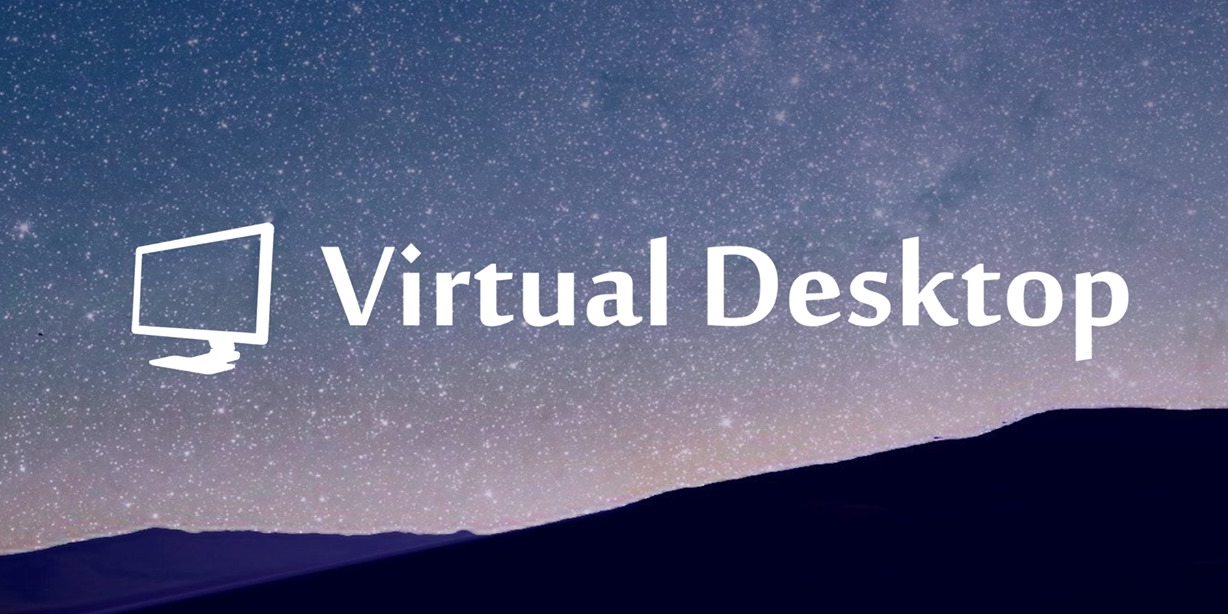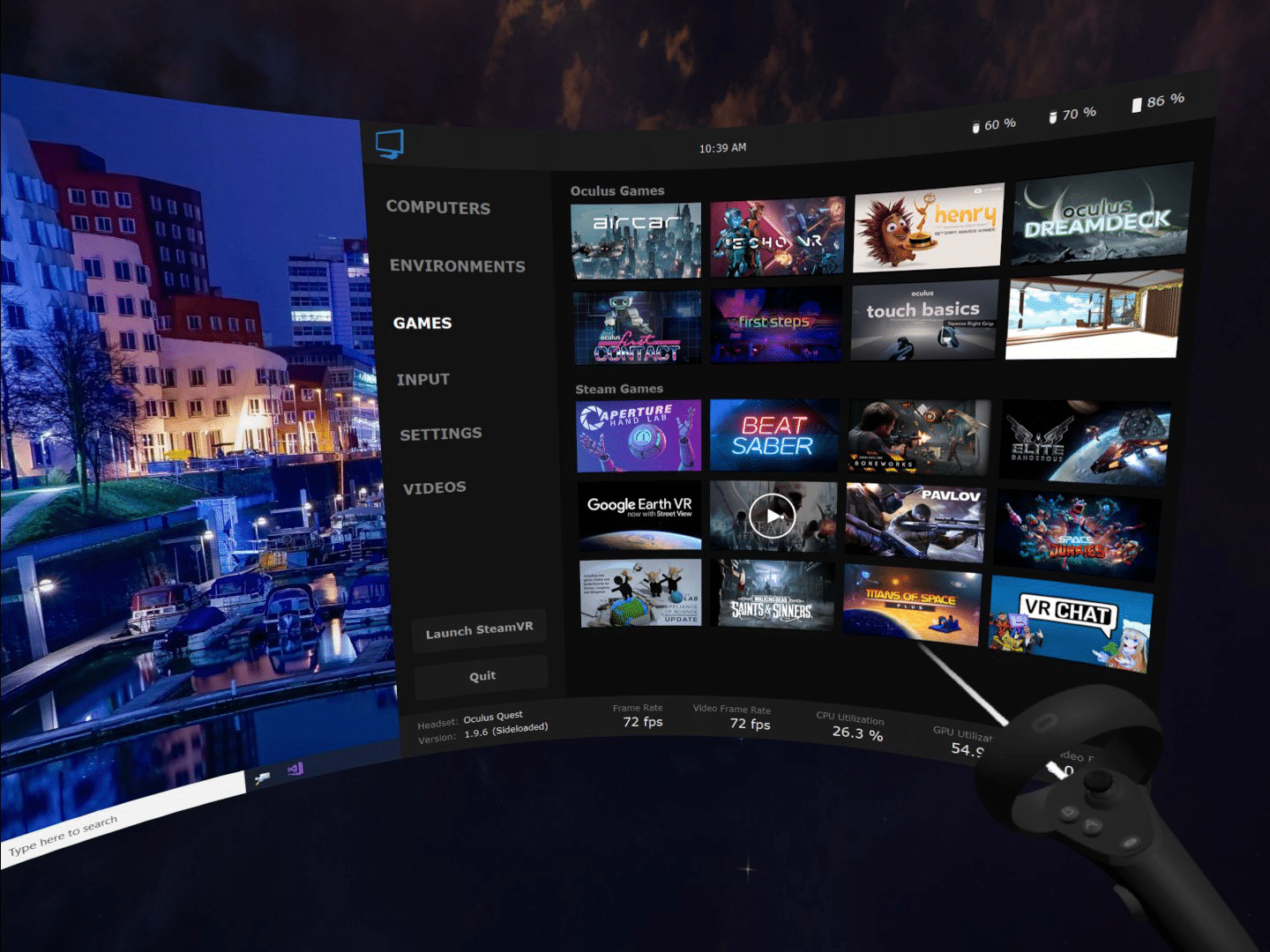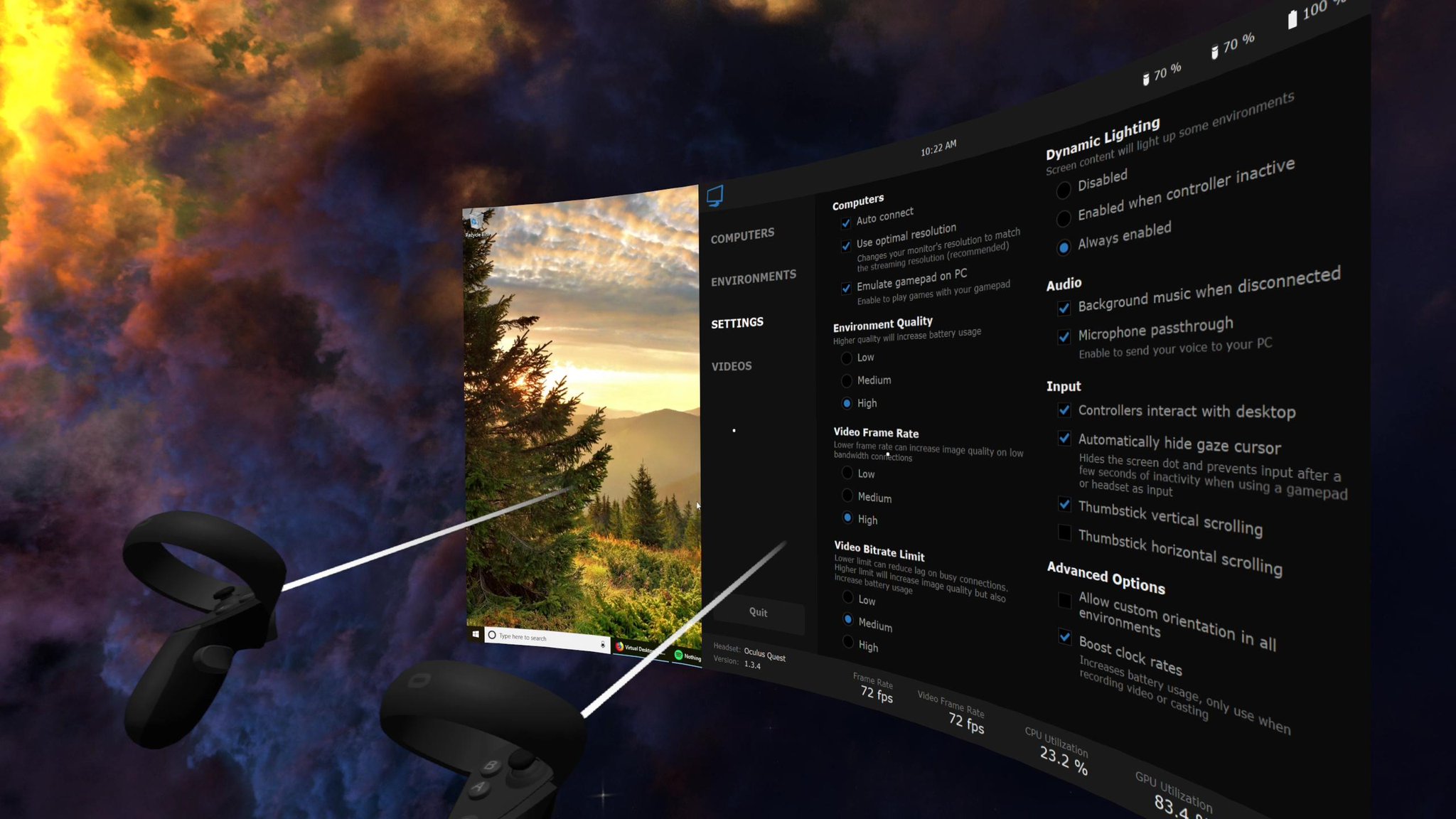Want to wirelessly stream PC VR content to your Oculus Quest headset using Virtual Desktop? Here’s how.
Facebook’s official solution for playing PC VR content on Oculus Quest is Oculus Link — a wired feature that streams games across a USB-C cable connected to a VR-ready PC. You can read our guide for how to use and set up Oculus Link here.
However, Virtual Desktop provides another way to play PC VR content on your Quest — it’s a wireless and unofficial solution, with the trade-off that reliability can vary between users, depending on their setup. Here’s how to do it.
What is Virtual Desktop?

Virtual Desktop allows you to bring your computer’s display into VR, providing you with a streamed version of your desktop that you can interact with and control from within VR. It requires the Virtual Desktop app on your headset, along with a companion streamer app installed on your computer.
The app is available for purchase on the Oculus Store for Quest. Up until February 2021, users had to sideload an alternative version of the app to enable PC VR streaming in Virtual Desktop. This is no longer the case — all you need is the Oculus Store version of Virtual Desktop.
The feature works similarly to Oculus Link, but is a fully wireless solution. However, the reliability of streaming PC VR content to your Quest via Virtual Desktop can be different for everyone, as it’s heavily dependent on the strength of your internal network and the hardware running it.
What You Need For Virtual Desktop
You will still need a VR-ready PC, just like Oculus Link. You’ll also still need the Oculus PC app installed, along with Steam and SteamVR if you want to play non-Oculus content. Also make sure your computer is connected via ethernet to your router and not wirelessly — the stability and higher speed is essential.
Speaking of routers, in general terms you’ll need a ‘reliable’ Wi-Fi router with a 5Ghz network. Make sure your Quest is connected to your 5Ghz network and not the 2.5Ghz one — again, stability is key.
You’ll need a copy of Virtual Desktop for Quest from the Oculus Store.
Last of all, install the Virtual Desktop streamer app for PC, which is available here. Once installed, launch the app and make sure your Oculus username is entered into the text field on the app’s main screen.
Streaming PC VR Content Using Virtual Desktop
After all of the above, you should now be able to open Virtual Desktop on your Quest and connect to your PC. You will see a streamed version of your PC desktop floating in the VR environment, which you can interact with.
To get to the Virtual Desktop menu, you can press the menu button (the one with the three horizontal lines) on your left Touch controller. Here, you can change settings and launch VR games. Virtual Desktop recommends launching games through this tab as opposed to manually via your desktop.

Makes sure that the respective client — Oculus or Steam — for your desired content is open and launch a game from the Virtual Desktop menu’s games tab, pictured above. Once in-game, you can adjust the settings to get the most reliable and comfortable experience possible.
Additional Settings
You’ve got everything set up and ready to go, there are a few settings you can tweak that might improve the reliability and performance of your experience.
All of the settings will differ on a per-person basis — different internal networks and routers will likely see different results with each setting. If you’re finding the experience is close to playable but still has a bit of noticeable latency or a few hiccups, we recommend turning everything down until you see a level of stability that you’re happy with.
Once you’ve begun a session and you’re streaming a game to your PC, head to the ‘Streaming’ tab in the menu of Virtual Desktop. From here, you can adjust the game quality from low up to high — depending on your hardware, which you select will change. However, a lower setting will mean less strain on the computer so if you’re experiencing performance or stability issues, lower is always better. This will require restarting your game for the change to take effect.

You can also adjust the bitrate of the stream’s image quality. Turning this down will have a noticeable improvement on stability and latency, however the lower you turn down the setting the worse and less crisp the resulting image will be. Try to find a balance between quality and performance — you can adjust this setting mid-session without having to restart a game to apply the effects.
You can also select the refresh rate for the streamed PC VR content. By default, this is set at 72Hz. The Quest 2 can select an increased 90Hz option, but whether this is feasible will depend on the performance and reliability you experience at 72Hz and whether you have performance overhead to turn the refresh rate up. A game restart will be required.
Enabled by default, the video buffering setting may help reduce latency if turned off. However, as the description notes, this may mean more noticeable jitters in performance from time to time. Test it out and see how you go.
Some Warnings And Performance Tips
Virtual Desktop is an unofficial solution and may not be as reliable or comfortable as Oculus Link. Some UploadVR staff have been able to use it perfectly without problems, while others sometimes have a sub-par experience. It will vary from user to user.
Depending on your setup, you may experience high latency, stuttering or black edges when moving fast, even after adjusting the settings listed above. The chance for poor performance is higher, which may also increase nausea for those who are susceptible.
Make sure you’re playing close to your router as possible, with as minimal interference as possible. Physical barriers, such as walls, can affect wireless stability, as can a congested internal network or unreliable hardware.
If you do get a connection that you’re happy with, keep a charging cord or battery pack nearby — using Virtual Desktop to play wireless PC VR content for extended periods of time is likely to drain the Quest’s battery.

























